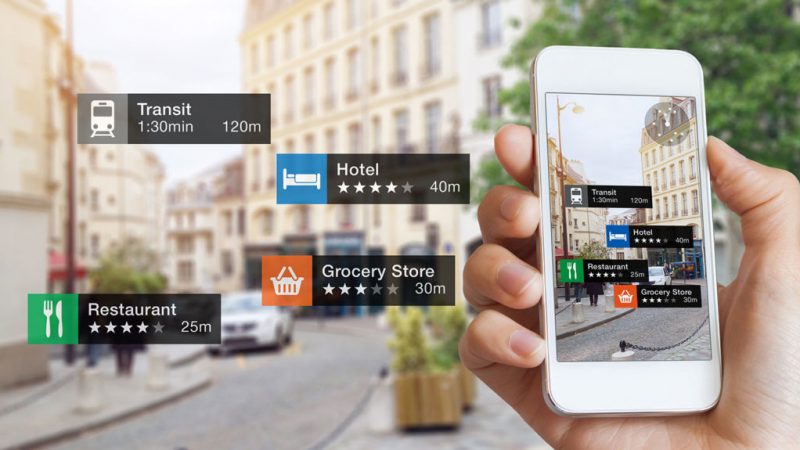September 30, 2018
Can you use Augmented Reality in your Next Marketing Campaign?

Skewing reality is the next big step in digital marketing, but it can also be a confusing concept for modern marketers. The ability to change the reality that consumers face is easier than you may think. Virtual reality may require specific equipment, but augmented reality can be accomplished straight through a customer’s mobile device.

In fact, Deloitte recently identified that almost 90% of companies with annual revenues of $100 million to $1 billion are now leveraging virtual and augmented reality. For smaller companies, a recent poll by Purch found that 10% of marketers already utilize AR and 72% plan to in the coming year. Augmented reality can do so much more than entertain people.
What is Augmented Reality?
Augmented reality is any type of experience you have in the real-world environment where objects and things are “augmented” by software on your mobile device. This is considered computer-generated perceptual information and can run across multiple senses, such as:
- Visual
- Auditory
- Haptic
- Somatosensory
- Olfactory
Creating an experience is uber important for the modern consumer. The Drum recently reported that AR experiences can lead to website dwell times of over 85 seconds and an increase of interaction rates by 20%. It also demonstrated click-through rates to purchase rising by 33%. These are figures that dwarf any metrics across print, TV, or online advertising.
Try Before you Buy
Augmented reality can help consumers make better decisions and lead to increased purchasing power. All of those people hesitant to buy before trying a product, can be swayed with augmented reality. Your audience can upgrade your content by adding customized filters and visuals to improve the image in their light.

AR empowers people to buy. For example, you can use augmented reality in your product catalogue to help people make more informed decisions. Users can lay a product over a certain environment to see if it is a fit for them. This allows people to experience more realistic online purchases. Wouldn’t it be amazing to see what shade your room would look like before you paint it? That’s the idea behind AR. It’s amazing when it comes to content marketing.
Experiential Marketing
AR is being used by big brands to create large installations that can carry on outside of the mall/shopping complex. Interactive billboards are keeping home advertising alive. People immerse themselves in the branded content and then download an AR app to continue the experience. It’s multi-channel marketing at its finest.

Visa and Coca-Cola have proven great examples of experiential marketing and AR. You can dance with penguins thanks to Visa or pat a polar bear because of Coke. The opportunities for sparking consumer engagement are limitless when it comes to augmented reality. And when it catches on, it can catch on quick. Remember Pokémon Go?
Call-to-Action
Augmented reality also works wonders in advertising campaigns. This is about taking gamification to the next level. Marketers can enhance interaction and immersion through AR. The technology enables the user more control over their experience and the message they choose to absorb. This allows consumers to feel empowered and less like they’re being sold to.
There are many ways to incorporate AR in your everyday campaigns. Use it to create a virtual tour that the user can manipulate for the offer that best suits them. AR can also be applied to case studies and experiential campaigns. The more you can enhance the personalization of the campaign, the greater the opportunity is to purchase.

There are other ways to incorporate AR into your marketing strategies. If you have the budget, creating a simple app to use alongside your product or service is an amazing way to draw consumer engagement to your brand.
The important thing to remember about any AR installation is to test and test again. It may not be technology your particular audience responds to. Before diving in, investing in some simple user testing can save you a lot of trouble.
The figures are there. The popularity of augmented reality will only continue to rise as the strategy becomes more anticipated by tech-savvy consumers. Start your AR planning now and you’ll gain a tech-driven competitive edge.







